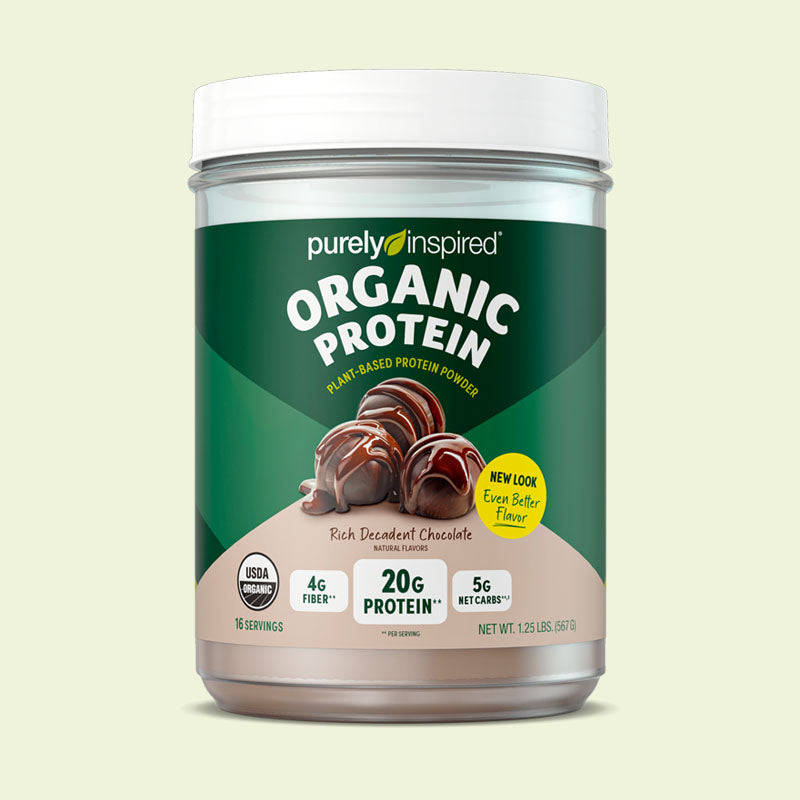You’ve probably heard it before that once you hit 40, your body slows down. But the truth is that what slows you down isn’t your energy, but your strength. Many women in their 40s notice that everyday things feel harder than they used to. Carrying groceries feels heavier, climbing stairs leaves you more breathless, and workouts that you once enjoyed doing don’t seem to work anymore. It’s frustrating and it’s real.
The biggest shift happens when muscle and bone strength begin to dip year after year. That means feeling weaker and becoming more prone to nagging aches, joint discomfort, or even injuries. Then there are the challenges that exist with busy schedules, stress, and hormonal shifts, and it can feel like the deck is stacked against you. For many women, the fear isn’t limited to not looking fit. It also circles losing independence, mobility, and confidence in their bodies as they move into their 40s and beyond.
But the good news is that there’s a simple, proven way to take control again, and it’s strength training. No, it doesn’t require hours in a gym or complicated equipment. And no, it won’t make you “bulky.” What it does is restore energy, build lean muscle, and protect your bones so you can feel strong, steady, and capable in everyday life. This blog will walk you through exactly how women over 40 can start, what myths to ignore, and how to build a plan that truly works.
Why Strength Training After 40 Changes Everything?
1. Muscle and Metabolism
After 40, it’s common to feel like your body doesn’t burn the way it used to. That’s because muscle mass naturally declines, and with it, metabolism slows. Less muscle means fewer calories burned even while resting, which can make maintaining weight feel like an uphill battle. Strength training changes that for you because it builds lean muscle, and lean muscle is your body’s engine. The stronger your engine, the more energy you have for workouts and for everything else in life.
2. Stronger Bones, Safer Future
One of the biggest challenges women face after 40 is the risk of weaker bones. It’s not something you notice right away, until a stumble or an awkward fall suddenly becomes a bigger deal. Strength training sends your bones the signal to stay strong. Think of it as giving your body insurance for the future. With regular training, you’ll be protecting yourself from injuries while making sure to stay active and independent for years to come.
3. Mood, Mobility, and Confidence
Many women report feeling more grounded, less stressed, and more confident once they start strength training and lifting. Simple movements like squats, pushes, or rows make everyday tasks like carrying laundry, climbing stairs, or even just standing for long hours easier. You can feel the shift in the body and mind. When you feel yourself getting stronger, you start to trust your body again, and that builds confidence.
5 Myths That Hold Women Back (and the Truth Behind Them)
Myth 1: “Lifting Weights Will Make Me Bulky”
This is the fear that stops many women before they even begin. The reality? Building bulky muscle takes years of heavy lifting, intense eating, and often genetics on your side. What strength training actually does is help your muscles look lean, firm, and toned. Instead of bulk, most women see the kind of definition that makes you feel strong.
Myth 2: “Cardio Alone Is Enough”
Cardio has its place as it strengthens your heart, increases endurance, and can be a great stress reliever. But it doesn’t protect muscle and bone the way strength training does. Without resistance training, women over 40 risk losing lean tissue faster, which can lead to fatigue and weakness. Doing strength work means you’re moving more and protecting your body’s foundation.
Myth 3: “Strength Training Hurts Joints”
Many women avoid lifting because they worry it will strain their knees, hips, or shoulders. But when you do it with proper form and right weight, strength training reduces joint pain by strengthening the muscles that support those joints. Besides, you can always adjust your movements to your comfort.
Myth 4: “Hormones Make It Pointless”
Hormonal shifts during perimenopause and menopause can slow progress, but they don’t erase it. As a woman, you can absolutely gain muscle, strength, and confidence after 40. Progress may feel different from it did in your 20s, but consistency pays off, and the benefits are life-changing.
Myth 5: “I Need a Gym Full of Equipment”
Not true. You can begin with your bodyweight, a resistance band, or a pair of dumbbells at home. What matters most is showing up consistently and moving with intention. The tools can come later, but the habit starts now.
How to Start Strength Training for Women Over 40?
1. Keep It Short and Simple
Being a woman in her 40s means busy schedules and no time. Between family, work, and endless to-do lists, setting aside hours for exercise can feel impossible. But you don’t really need hours. Just 2–3 sessions a week, about 30–40 minutes each, is enough because consistency matters more than unrealistic workouts.
2. Start With What You Have
You don’t need fancy machines or a membership to begin. Your bodyweight is a good starting point. Moves like squats, push-ups against a wall or counter if needed, and bridges can be done anywhere. If you want to add variety, resistance bands or a set of dumbbells are affordable and take up almost no space at home.
3. A Quick Checklist
You can use this checklist as a reference whenever you decide to start:
Wear comfortable shoes that support your feet.
Clear a small, safe space to move in.
Keep water nearby and hydrate before, during, and after.
Warm up with a few minutes of marching in place or light stretching.
It doesn’t take much, but these small steps help prevent injury and make training more enjoyable.
The 5 Exercises That Do the Most
1. Squats
Think of squats as practice for sitting down and standing up with ease. They strengthen your legs, hips, and core, the muscles you use every time you get up from a chair or climb stairs.
How to start: Begin with bodyweight squats, holding onto a chair for balance if needed. Over time, add a dumbbell to your chest, called a goblet squat, for a challenge.
2. Hip Hinge
The hip hinge teaches your body how to bend safely and lift without straining your back. It targets your glutes and hamstrings, which often weaken with age.
How to start: Stand tall, push your hips back like you’re closing a car door, then return to standing. Once comfortable, try a Romanian deadlift with light dumbbells.
3. Push Movements For Upper Body Strength
Push movements train your chest, shoulders, and arms. They also build upper-body confidence that many women feel they’ve lost with age.
How to start: Begin with wall push-ups. As you gain strength, progress to an incline (hands on a bench or counter) and eventually to the floor.
4. Pull Movements For Good Posture
Pulling exercises fight rounded shoulders and support a strong back. They make carrying groceries, lifting bags, and even maintaining a tall posture easier.
How to start: Use a resistance band anchored to a doorknob for rows. Pull the band toward your body, squeezing your shoulder blades together. Later, try dumbbell rows for more strength.
5. Carry Weight For Core Training
Carrying weight strengthens your grip, core, and stability. This will help you greatly in daily life, like hauling groceries or holding a toddler.
How to start: Pick up two light dumbbells or even water bottles, hold them at your sides, and walk a short distance. Focus on standing tall and steady.
An 8-Week Beginner Plan To Start Training
Starting a new routine after 40 shouldn’t be overwhelming for you. This is a beginner plan to fit into your busy schedule and give results without burning you out.
Weeks 1–4: Build the Habit (2 Days a Week)
For the first month, your focus should be consistency and form. Two sessions a week are plenty to see progress without feeling overloaded.
Day 1:
Squat, 2–3 sets of 8–12 reps
Rows with band or dumbbell, 2–3 sets of 8–12 reps
Glute Bridge, 2–3 sets of 8–12 reps
Farmer’s Carry, 2 rounds, 20–30 steps
Day 2:
Hip Hinge, 2–3 sets of 8–12 reps
Push-up variations with wall or incline, 2–3 sets of 8–12 reps
Split Squat and use a chair for support, 2–3 sets of 8–12 reps
Suitcase Carry, one side at a time, 2 rounds, 20–30 steps
Weeks 5–8: Increase Momentum (3 Days a Week)
By now, you would’ve built the base, so it’s time to add a third day. This doesn’t mean going heavier right away, but practicing the moves more often and slowly progressing.
Day 1:
Squat
Row
Hip Hinge
Farmer’s Carry
Day 2:
Lunge or Step-Back Lunge
Push (incline or floor)
Dead Bug or Plank Hold – 20–30 sec
Carry variation
Day 3:
Step-Up (use a sturdy step or bench)
Pull (band-assisted row or pull)
Bridge or Hamstring Curl
Carry variation
Keep workouts around 40 minutes max. Track your reps or weights in a notebook to see progress for motivation. By the end, you’ll notice more strength, better posture, steadier energy, and a new sense of control over your body.
Tips For Better Results, Form, And Safety While Strength Training
Strength training works best when you feel safe and in control. Now, that doesn’t mean you need perfect technique from day one; instead, all you need are a few simple cues to guide you.
1. Warm Up Before You Lift
Your body performs better when it’s prepared. A quick 5–7 minutes is enough to get blood flowing and joints ready. You can follow this warm-up routine.
March in place or walk around the room.
Do a few arm circles and shoulder rolls.
Add 10–12 easy bodyweight squats.
This small step reduces stiffness and helps prevent injury.
2. Focus on Posture, Not Perfection
Instead of chasing “perfect form,” focus on one easy thing that is to stand tall, brace your core, and move smoothly. Tighten your stomach gently, like a shield. Keep your chest lifted, shoulders relaxed, and eyes forward. Move through each rep slowly, about two seconds up, two seconds down.
3. Know When to Pause
Discomfort in your muscles is normal, but sharp pain in your joints is not. If something feels wrong, stop and reset. When you start, choose a lighter weight or fewer reps and don’t take it as a setback, but smart training.
4. Breathe With the Movement
It’s common to hold your breath without noticing, but that puts strain on your body. A simple cue can follow is to exhale when you lift, inhale when you lower. This keeps your energy steady and your core strong.
5. Sleep is Your Built-In Repair System
Quality sleep is one of the most ignored aspect of strength training. Try to get 7–9 hours most nights. It’s during deep sleep that your body repairs muscles, balances hormones, and restores energy. If you’ve ever felt sluggish or weaker after a short night, that’s your body reminding you how important rest really is.
6. Rest Days Aren’t Lazy Days
Many women feel guilty when they’re not “doing something.” But rest days are essential. Light activity like walking, stretching, or yoga keeps blood flowing without draining your energy. Do gentle movements to help your body bounce back stronger.
7. Listen to the Signals
If you’re constantly sore, unusually tired, or not looking forward to training, your body may be asking for a break. Progress doesn’t come from pushing harder every time. It comes from finding balance. Take an extra rest day if you need it.
8. Fuel Recovery With Nutrition
What you eat after training helps, too. A mix of protein and healthy carbs gives your muscles the building blocks to repair. A simple option is a protein smoothie, yogurt with fruit, or eggs with whole-grain toast. Small, balanced choices help in better recovery.
Strength Training Through Perimenopause & Beyond
Perimenopause and menopause bring changes that can feel frustrating, like hot flashes, shifting hormones, and sometimes slower progress in the gym. But none of these means that strength training stops working. In fact, it becomes even more important during this stage of life.
1. Progress May Feel Different, Not Impossible
As you age, Hormonal changes can affect how quickly your body builds muscle or recovers. That doesn’t make the results out of reach; instead, it’s a sign that patience and consistency matter more than ever. You can’t always expect quick wins.
2. Lift Heavy Enough to Challenge You
For years, women were told to stick with “light weights and high reps.” But research shows that lifting heavier with good form is what truly strengthens muscles and bones, so lift weights that feel challenging by the last 2–3 reps of a set, while still keeping your form controlled.
3. Adapt Your Training, Don’t Stop
If you’re feeling joint discomfort, low energy, or mood swings, adjust the plan instead of giving up. Shorter sessions, more rest between sets, or switching to resistance bands on tougher days still keep you moving forward.
4. Look Beyond the Scale
Many women over 40 get discouraged when the scale doesn’t budge. But strength training gives you wins you can’t always measure in pounds. Maybe you’ll notice your clothes fit better, you sleep more deeply, or you can carry all the grocery bags in one trip. These non-scale victories are proof that your body is changing for the better.
5. Small Habits, Big Results
Motivation comes and goes, but habits stick. Try to do your workouts with something you already do, like your morning coffee, your favorite playlist, or even a set time in your calendar. Start with a “10-minute rule”. Commit to just 10 minutes of movement. Most of the time, once you begin, you’ll finish the session, and if not, you still did something positive for your body.
6. Strength Builds Confidence
There’s a special kind of confidence that comes from lifting a weight you once thought was too heavy or finishing a workout you almost skipped. That sense of capability spills into the rest of your life, from how you carry yourself at work to how you show up for your family.
FAQs: Strength Training for Women Over 40
Can I still build muscle after 40?
Absolutely. Your body is capable of building strength at any age. Progress may be slower than it was in your 20s, but with consistent training and good nutrition, you’ll see and feel results. It is a steady, long-term progress instead of quick fixes.
How many days per week is enough?
Two days a week is a strong place to start. It gives your body time to adapt without feeling overwhelmed. Once you’re comfortable, moving up to three days can help you progress faster, but even two days done consistently can bring life-changing results.
What if my knees or shoulders hurt?
Discomfort doesn’t mean you can’t train. It’s just a sign that you need smarter choices. Swap squats for step-ups, or push-ups for a wall press. Strength training can support sore joints by building the muscles around them. Always listen to your body and stay in pain-free ranges.
How soon will I see results?
Many women feel stronger and more energized within 2–4 weeks. Visible changes in muscle tone usually appear around 6–12 weeks, depending on consistency, nutrition, and rest. Remember that strength is built day by day, not overnight.
End Note: Start Today
You don’t need the perfect plan, endless time, or any equipment to start. All you need is the decision to begin and the discipline to keep showing up. Strength training after 40 shouldn’t make you chase someone else’s version of fitness but help you build the kind of strength that carries you through your own life with energy, confidence, and control. Don’t wait for the “right time.” Begin with what you have and where you are. Ten minutes of movement today beats waiting for tomorrow. The results won’t come overnight, but with every rep, every session, and every week, you’re stacking small wins that make all the difference.
Picture yourself six months from today, where you feel stronger and move with more confidence. That future is built by the choices you make today. Strength training is a commitment to your health, your independence, and the life you want to live. You’re not behind. You’re right on time. Take the first step now because your stronger, more confident self is waiting.







